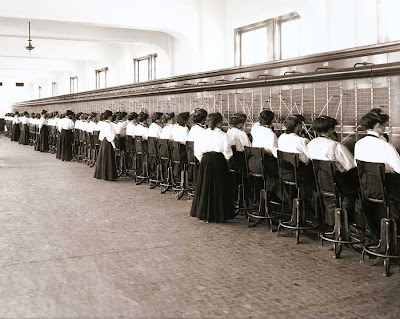 |
| Building 9 - two spaces, building foyer with screens and entrance to theatre beyond |
 |
| Building 9 - astroturf seat/terrain |
 |
| Building 9 - automatic sliding doors sense movement |
 |
| Building 9 - stairs adjacent to foyer |
However what really inspires me are projects that make intangible environmental conditions apparent in a poignant way such that a different engagement with the environment is encouraged - I highlighted this in my initial post for this unit with exemplar projects such as Scott Snibbe's Boundary Functions, Daniel Hirschmann's Tuned Stairs and Usman Haque's Sky Ear.
Equally exciting for me is that these projects can be interacted with by multiple agents. Scott Snibbe's project can only display boundaries when there is more than one person, Daniel Hirschmann's project encourages exhibitionism as people walk down stairs and Usman Haque's project visualises mobile phone calls and text messages from the audience. This idea that an installation can be curated by the audience, giving ownership and understanding of process, is powerful. Yet if the installation can facilitate collective curation, that is interactions with multiple 'authors', and be better for it (say because of shared creativity in response to emergent conditions) then it is all the more engaging.
The final important lesson is to keep it very simple. With all of these projects interaction is intuitive and feedback has distilled clarity and pertinence. Vanessa Wang has also highlighted the importance of this.
Andre Michelle's ToneMatrix is another good project that demonstrates these principles. This week it has been emailed around the architecture studios and I have seen it cause many hours of procrastination - some students have been so fascinated that they have revisited the project a number of times. It is a web version of the Yamaha Tenori-On a synthesiser that allows you to manipulate simple sinewaves by turning on and off pixels in a matrix.
 |
| ToneMatrix, Andre Michelle, 2009 |
My initial google investigations found that pressure sensitive pads are expensive but that it may be possible to build our own. Vanessa Wang is proposing to work with pressure sensitive pads too. I think that that Stephen Barrass' ZiZi the Affectionate Couch used conductive thread to to make the ottoman sensitive to touch. (Clarification: Stephen says the static electricity generated by stroking the fabric was passed through the conductive thread to an input reader, essentially making the entire surface ottoman sensitive, but that this was impacted by humidity). Perhaps pressure sensitive cushions for the astroturf seat/terrain are a more achievable scale for input than mats to cover the floor, although it may be possible to make piano stairs alternatively with basic lasers aimed at light sensors such that footfalls break the beam. Subyeal Pasha proposes using lasers in a similar way. Amber Standley suggests the use of a Theremin synthesiser which neatly doesn't require any touch, producing sound in response to proximity.
A pixel matrix interface could be constructed with simple on/off buttons and basic light bulbs. It has to be at scale large enough that it can be interacted with simultaneously by multiple people. The experience would be akin to that of operating a switchboard and perhaps therefore explicitly curatorial.
When someone is not curating the installation, perhaps it could keep playing the previously curated state.
 |
| Salt Lake City Switchboard, 1914 (Image: Royce Bair) |
Vanessa goes further than the idea of curation to suggest game play as a driver of engagement. There is nothing like firing up those competitive juices for getting people hooked - here is a lovely 1994 Wired article exploring the psychology behind why Tetris is so addictive.
Anaer Anaer proposes an opposite focus, that is on mapping environmental conditions (noise). If this is part of a larger installation then perhaps the output can be a combination of background condition and interaction, and when there is no interaction revert back to mapping background condition.
Great informative article. Enjoyed reading the post. The images are very impressive. Thanks for sharing this, along with this I would like to share Commercial Electrical Contractors | house rewiring Melbourne | Electrical Contractors Melbourne
ReplyDelete